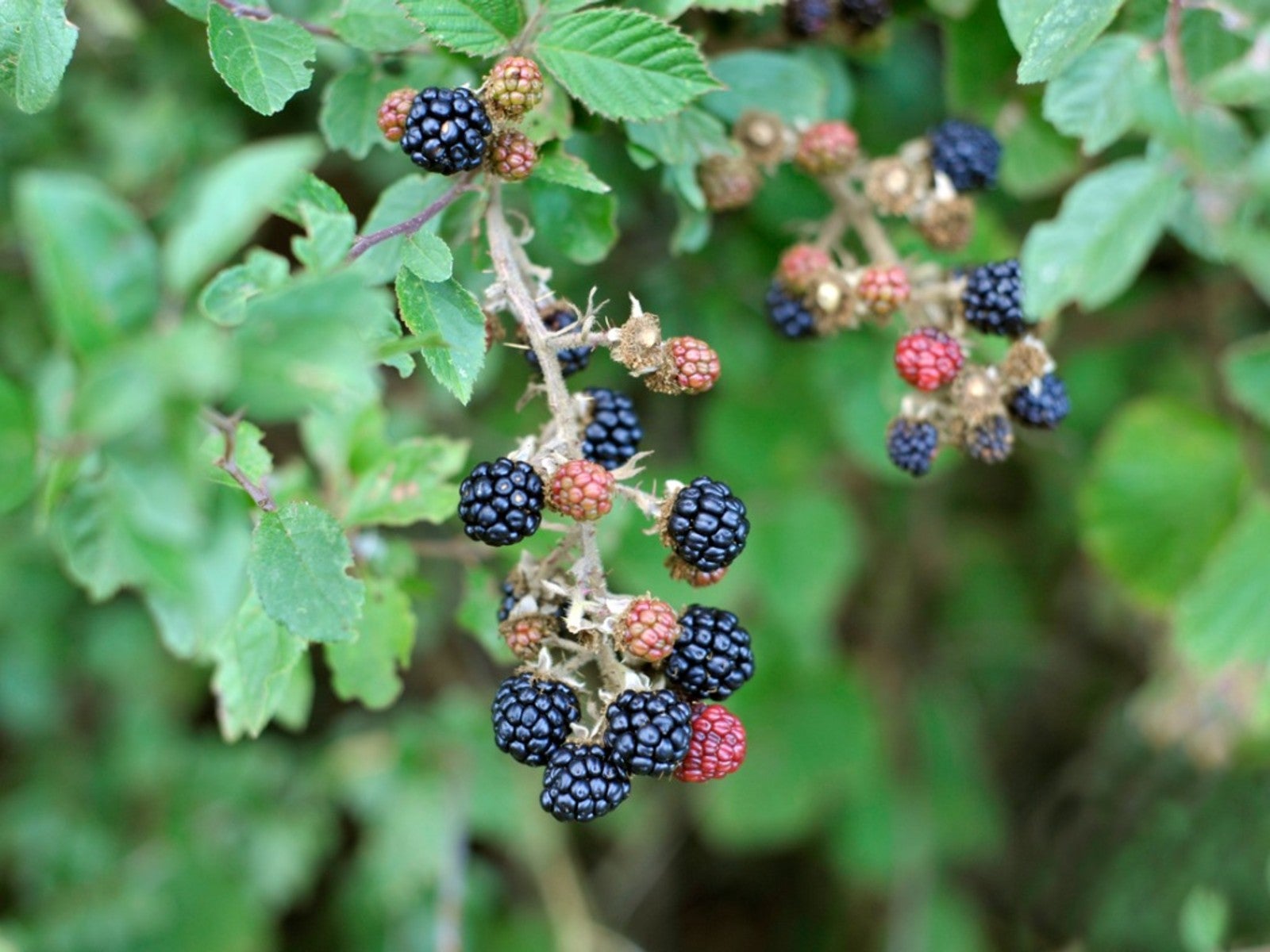
Guide to Pruning Blackberries For a Bigger Harvest
If you're considering pruning blackberries, perhaps this article will help you with what can be a confusing snarl of thorny canes.
Anyone who’s ever viewed a profusion of blackberry canes knows they can become so tangled and dense it’s nearly impossible to pick the luscious fruit without suffering grievous injury.
Hailing from the Pacific Northwest, I am particularly familiar with not only the delectable fruit but also the multitude of wounds one receives when procuring it. Pruning blackberries will not only serve to tame their wild habit and prevent further maiming but has another purpose as well. Keep reading to learn how and when to prune blackberry bushes.
Do You Need to Prune Blackberry Bushes?
Pruning blackberry bushes is not absolutely necessary; they seem to thrive under adverse conditions. However, pruning will not only make it easier to get at the fruit but less dangerous to your delicate skin as well.
Also, pruning blackberries allows you to separate the first and second years of growth. Canes from the first year are called “primocanes”. They do not produce either blooms or fruit. The second-year canes, called “floricanes” are the producers.
If you don’t cut back the canes, both the primocanes and floricanes mix together into a snarl of canes that harbors diseases and pests and reduces productivity.
When to Prune Blackberries
When exactly to prune blackberries seems to be a matter of contention. Some say prune in the summer and winter while others say in the fall.
Sign up for the Gardening Know How newsletter today and receive a free copy of our e-book "How to Grow Delicious Tomatoes".
From a multitude of sources, here is what I've gleaned. Fall is not a common time to prune blackberries unless you have everbearing varieties. Some growers cut the canes back to the ground in the fall when the plants are done producing.
Otherwise, winter is the most common time to prune blackberries but not always the best time Some gardeners prune out the floricanes in winter which can actually reduce the growth and development of the primocanes. That said, blackberries can and should be trimmed year-round with different cuts for different seasons and reasons.
For instance, year-round you should be removing any dead, diseased, or broken canes. After that, it gets even a little more confusing.
About Blackberry Canes
To shed some light on what can be a confusing topic, let’s focus on the canes. The first-year shoots emerge in April with thick, green foliage that develops buds in late spring. These are the primocanes. They can grow many feet if left untrimmed.
The floricanes are the older, second-year, canes that flower and set fruit during the summer. They die back once harvested. But at any one time, there will likely be both primocanes and floricanes on the same plant; sometimes they both have green foliage so which one is which can be difficult to discern. Both cane types have different pruning needs.
How to Prune Blackberries
While there are erect, trailing, thorny, and thornless blackberry varieties, for the most part, all can be pruned in the same manner with the same goals. The primary goal is to remove the older floricanes which will allow the plant to divert its energy the successive year to this year's primocanes, which will be fruit producers next year.
Always start with sterile pruning shears and/or loppers. In late June or July, tip back the developing primocanes to about 48 inches (1.2 m). Why? Removing the tips of the primocanes allows the plant to focus its energy on producing lateral branches which improves yield. Remove the tip above the leaf. To avoid fungal or pathogen disease, apply fungicide to the cut tip.
In the spring, tip back lateral shoots to about 18 inches (46 cm). This will help to prevent winter damage and injury.
Unless they seem diseased or damaged, don’t touch the floricanes until they have fruited. Once they've fruited, cut the floricanes to the crown of the plant. Also in late winter, if you haven’t already, prune the lateral branches to increase fruit size as well as air, sunlight and water penetration. It also makes it easier to harvest the berries. Again, consider applying fungicide to any cut canes.
At the end of your pruning, leave only 4-6 vigorous primocanes per plant. Remove any spent floricanes, dead, diseased, or dying branches. Remove and discard any debris. If you take the time each year to manage your blackberries, they will reward you with succulent, juicy fruit for up to 20 years.
FREQUENTLY ASKED QUESTIONS
- Do Blackberry Bushes Need to Be Cut Back in the Winter? If you haven’t already done so, then yes, you should cut back your blackberries in the winter. Since the bush is dormant, it is an ideal time to sort the primocanes from the floricanes and remove any damaged or diseased canes.
- Do Thornless Blackberries Need Pruning?Treat thornless blackberries just like those with thorns, which means pruning out the floricanes once they’ve been harvested, remove any dead, damaged, or diseased canes, and tip-prune primocanes.
- How to Tip-Prune To do blackberry tip-pruning, use a sharp, clean pair of pruning shears and cut back the blackberry canes to about 24 inches (60 cm.). If the canes are shorter than 24 inches (60 cm.), simply prune off the top inch (2.5 cm.) or so of the cane. While tip pruning, you can also prune off any diseased or dead canes.

Amy Grant has been gardening for 30 years and writing for 15. A professional chef and caterer, Amy's area of expertise is culinary gardening.
